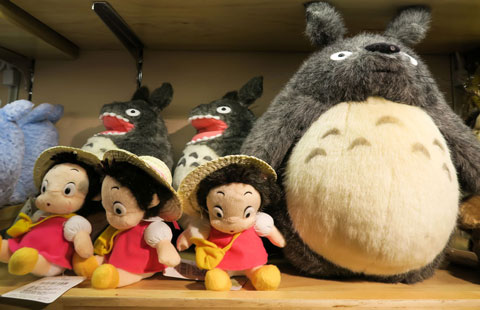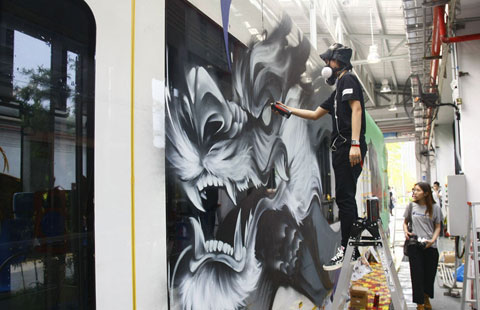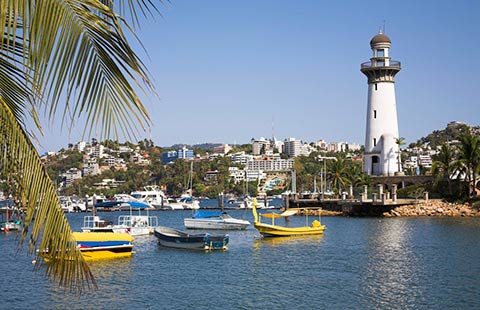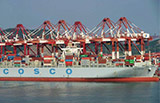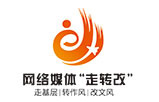China's new crush: trendy Beaujolais
By Xiao Xiangyi (China Daily European Edition) Updated: 2012-01-13 11:38|
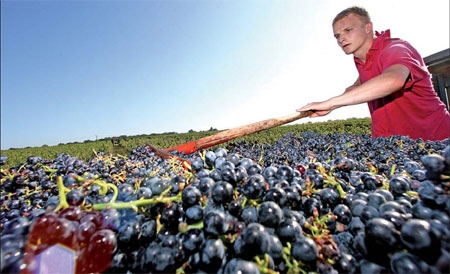 The Beaujolais region in France is the home to many high quality French wines. [Provided to China Daily] |
Wine cooperative helps popularize vin de primeur
The Chinese wine drinkers' love of Bordeaux is unquestioned - the nation is the top export client for the French region. But with China's wine-drinking surge in recent years, there is a blossoming flirtation with a younger, trendier French wine: Beaujolais Nouveau.
Made from Gamay grapes and bottled less than half a year before it is produced, the tart and fruity Beaujolais Nouveau is both popular in many parts of the world, from Japan to Spain, and divisive: You either hate or love the bold taste.
That uniqueness, however, has not stopped oenophiles in China from buying the red wine in bulk. According to the Association of Inter Beaujolais, a group representing more than 3,000 wine producers and merchants in southeast France, sales in China reached 500,000 bottles in 2010. The association predicts that 2011 sales figures will reach 800,000 bottles or more. Last year, the region of Beaujolais produced around 95 million bottles.
It's no coincidence that more and more Chinese buyers are lapping up the trendy wine - according to The Paris News, 2011 was characterized by unusually good weather that led to early harvests and appears to have produced higher quality wine from fewer grapes.
"Chinese people are getting informed of well-known brands and more and more look after a bigger variety of brands and types of wines, especially vintage wines," says Philippe Lacondemine, the president of the Cave Cooprative de Quinci, the Beaujolais region's oldest and largest cooperative.
Based in Quinci en Beaujolais, the company has sold 200,000 bottles from the summer season of 2010 through summer in 2011.
"China is now our third-biggest market outside France and thanks to our good connections, we (will) work to have it as No 1," says Olivier Condette, export manager of Cave Cooprative de Quinci.
Finding good partners is the company's biggest goal for its business in China, and Lacondemine and Condette have developed a plan that comprises online sales, a chain of wine stores, wine bars and restaurants as well as distribution to Chinese supermarkets.
Cave Cooprative de Quinci began selling its wine in China in 2006 through a Chinese partner who the company says owned a restaurant in Paris. Initially, Lacondemine, who says Beaujolais Nouveau pairs well with Chinese food, didn't know the Chinese palate very well. He knew they loved smooth, mellow reds like Bordeaux, but he also knew Chinese were starting to become more familiar with ros, which is bright in flavor like Beaujolais Nouveau. As more Chinese wine lovers began buying wines as well as wineries in France, Lacondemine knew the Beaujolais Nouveau and the region would be a hit.
"The right thing for wine investment is to choose a place where you find a personal and real connection, with the land, the people, the lifestyle. And Beaujolais is all about real and natural things," he says.
Another company that captured the Chinese curiosity for Beaujolais Nouveau is YesMyWine, a Shanghai-based site that offers a platform for merchants to sell imported wines. YesMyWine, which also sells its products through direct-mail catalogs and via telemarketing, is the biggest online sales partner of Cave Cooprative de Quinci and has contributed tremendously to the popularity of Beaujolais Nouveau.
Founded in 2008, the company holds an annual launch of Beaujolais Nouveau every third Thursday of November, not coincidentally the same time when the vintage is released throughout France. YesMyWine gathers red-wine lovers around at least 10 major cities in China and holds wine-tasting parties.
"It is more like a carnival for the rookie wine drinkers and youngsters, especially the post-1980 generation," says YesMyWine chairman Yuan Jiang. "Sales of Beaujolais Nouveau, though currently contributing to less than 2 percent of YesMyWine's revenue, is absolutely a new growth point for our business."
Yuan says the company's 2010 revenue reached 70 million yuan ($11.09 million, 8.69 million euros) and 200 million yuan in 2011, though those figures include sales of other wines.
"To us Beaujolais nouveau means France, it helps us to get acquainted with a little bit of French culture," says Zhu Yi, a 26-year-old Shanghai resident.
Zhu is a frequent customer at Shanghai's Zeal Club and each time he gathers his friends over, he advises them to drink Beaujolais instead of their previous favorite option - beer.
Yuan says the growing popularity among young people is twofold: First, it is relatively cheap, with an average price of 300 yuan a bottle in Shanghai supermarkets; second, because the wine is widely distributed in Shanghai, more new drinkers can purchase it. Or, maybe it's just a good way to attract the ladies.
"It is fragrant yet not too heavy. Ladies have no problem with drinking it," Zhu says.
- VW China's environmental program big hit in Urumqi
- Beijing puts restriction on property buyers in Tongzhou district
- Central bank drains 220b yuan from market
- Teapot craftsman makes innovation, passes down techniques
- Positive attitude goes long way
- China's CRRC Industrial Investment opens European office in Budapest
- Half of new state vehicles to be powered by new energy
- More private investment will put China's recovery on firmer ground



